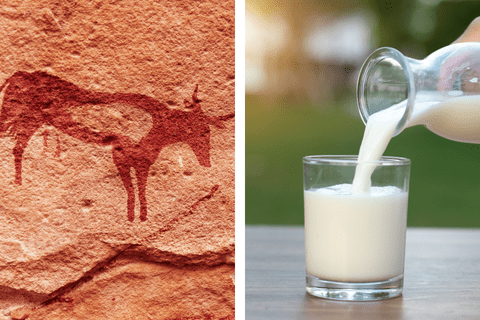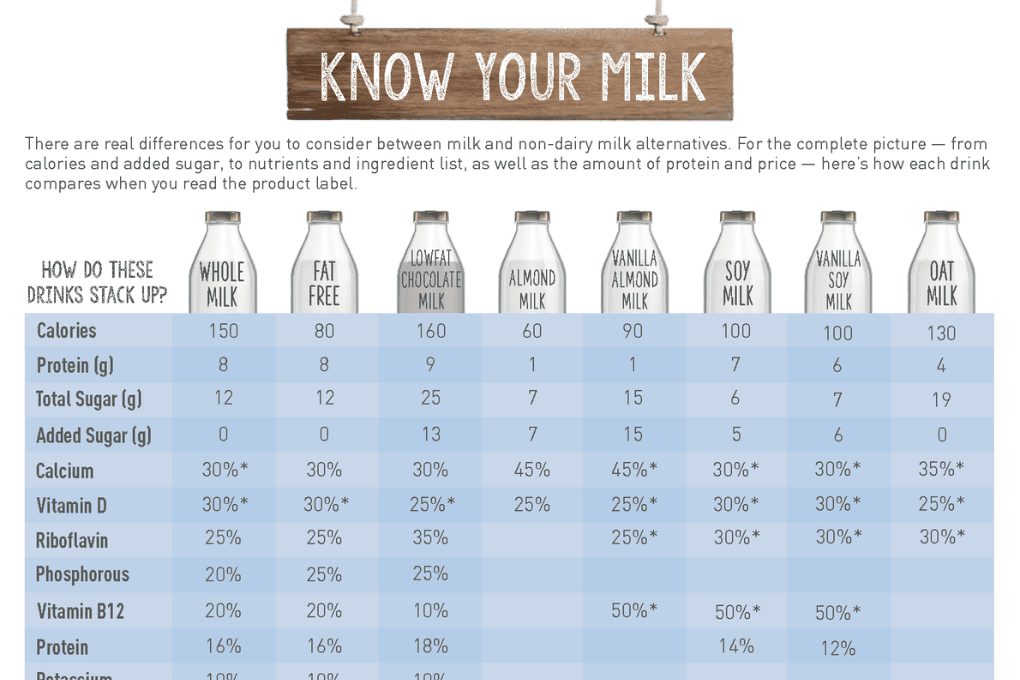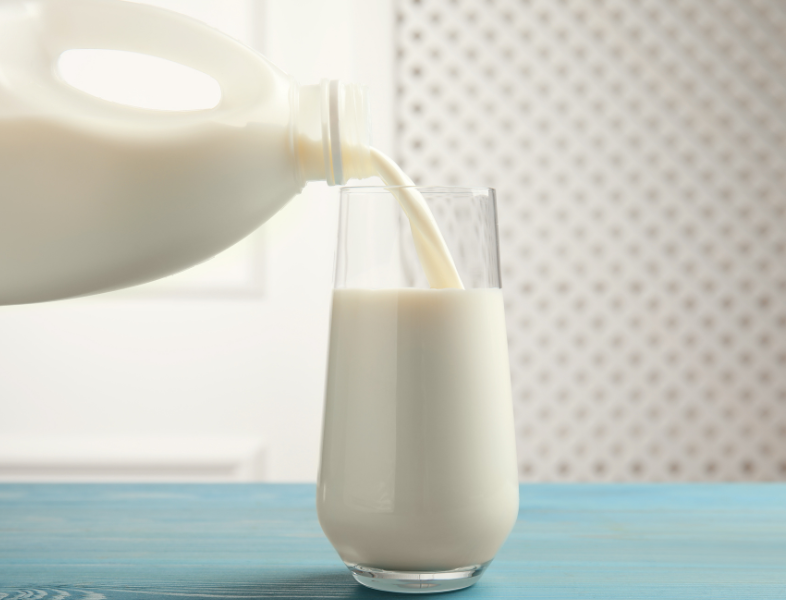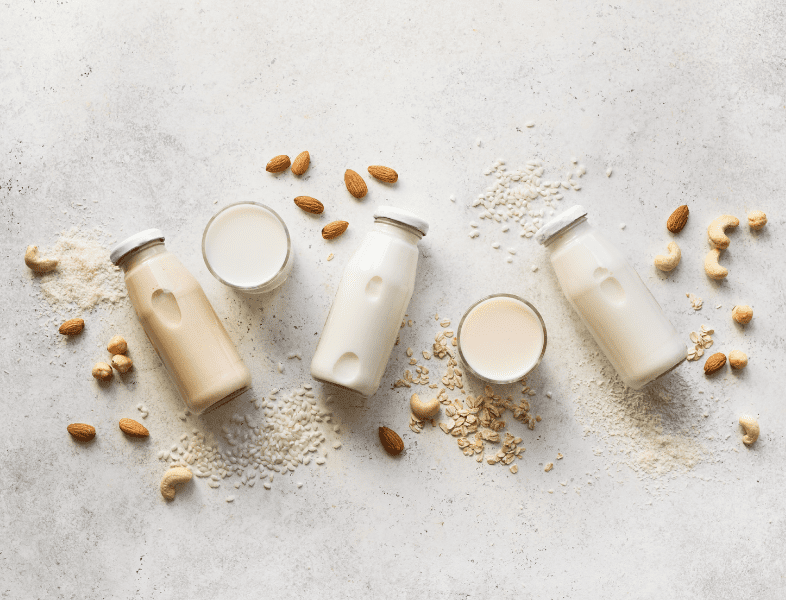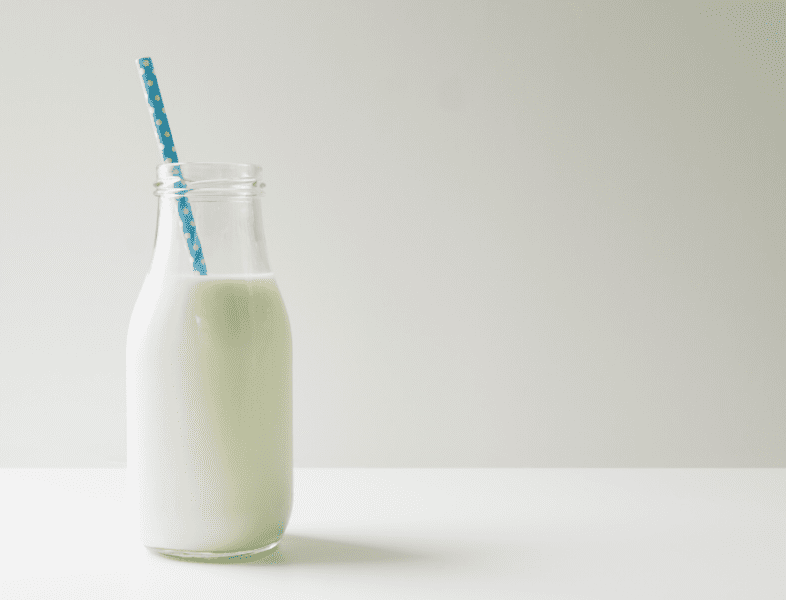Milk FAQs
While it’s tricky to pinpoint one instance in time that simply explains how milk was discovered, scientists have ample evidence that humans began drinking milk from animals at least 10,000 years ago.
- Evidence of intensive dairy farming in Ireland and using milk to make butter, cheese and yogurt goes back 6,000 years, according to researchers who found fatty acids from milkfat preserved in cooking vessels.
- Milk consumption in central Europe, including Poland and the Netherlands, has been traced as far back as 5,200 B.C. by archeologists who found well-preserved milk fat on samples of ceramic strainers used for making cheese.
- A scientific report provides direct evidence of people drinking milk (from cows, sheep and goats) as early as the Bronze Age (3,000 B.C.). Researchers found dairy protein (β-lactoglobulin) residue on archeological tooth samples of people living in Europe and northern Southwest Asia.
The calorie differences between the primary types of milk are due to their differing fat content.
- Fat-free milk (0% milkfat): 80 calories per cup
- Low-fat milk (1% milkfat): 100 calories per cup
- Reduced-fat milk (2% milkfat): 120 calories per cup
- Whole milk (3.25% milkfat): 150 calories per cup
Yes. Milk contains 13 essential nutrients like high-quality protein, calcium, vitamin D and more.
These nutrients help our bodies function properly. For example:
- Protein helps build and repair muscle tissue
- Calcium and vitamin D help build and maintain strong bones and teeth
- Protein, zinc, selenium and vitamins A and D help support a healthy immune system.
Milk also contains B vitamins, which can help your body convert food into fuel:
- Vitamin B-12
- Riboflavin (B2)
- Pantothenic acid (B5)
- Niacin (B3)
All milk produced in the US must adhere to the same strict federal standards for quality, purity and sanitation. In terms of quality, safety, and nutrition, there’s no difference between organic and regular milk. They contain the same amount of 13 essential nutrients per serving. The difference is how they are produced on the farm.
Those using the “USDA organic” seal must ensure that the milk comes from dairy farms that meet the following criteria:
- Cows spend at least 120 days per year on green pasture. They usually eat supplemental feed as well, to make sure they get enough protein.
- In the winter, cows on organic dairy farms eat the same type of feed as cows on other farms, except the ingredients must be certified organic and grown without the use of pesticides, commercial fertilizers, or genetically modified seeds.
- Organic farmers are still able to use pesticides – but they are approved for organic use.
- Cows are not treated with supplemental hormones (rbST).
- Cows have not been given antibiotics to treat illness. If a cow at an organic dairy farm does have to be treated with antibiotics, the farmer can no longer use her milk, even after she is no longer taking antibiotics. There are never antibiotics in your milk once it’s at the store whether it’s organic or regular.
Conventional dairy farms may use some of the same management practices listed above but choose not to undergo the rigorous organic certification process. For example – New England dairy farmers no longer use supplemental hormones (rbST) to increase milk production.
Cow’s milk contains 8 grams of protein per 8-ounce cup of milk, and approximately 30-percent of this protein is beta-casein. Two common variants of beta-casein found in cow’s milk are A1 and A2. Some cows produce milk with an equal ratio of both A1 and A2 proteins, and some cows only produce the A2 protein. A2 milk only contains the A2 beta-casein protein. A2 milk is still cow’s milk and the nutrient levels – like calcium, potassium, protein, and vitamin D – are the same.
When compared to drinking regular cow’s milk, some people with undiagnosed dairy intolerance have reported that drinking A2 milk does not result in discomfort. These claims are person-specific. Claims that A2 milk reduces dairy-related inflammation, heart disease risk, or type 1 diabetes risk have not been supported by the science. The health benefits of A2 milk remain a theory, and more research is needed.

